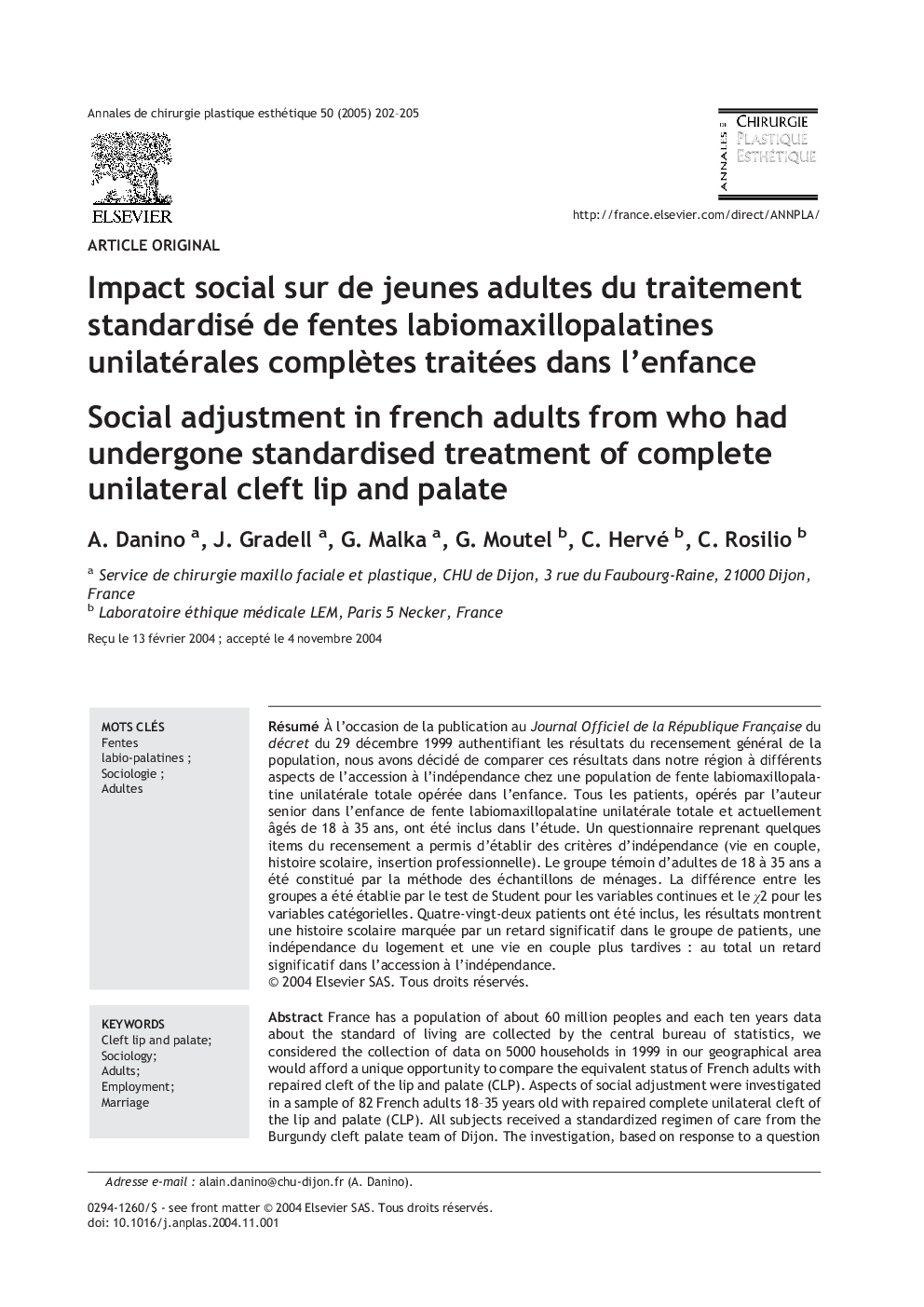| Article ID | Journal | Published Year | Pages | File Type |
|---|---|---|---|---|
| 9223362 | Annales de Chirurgie Plastique Esthétique | 2005 | 4 Pages |
Abstract
France has a population of about 60 million peoples and each ten years data about the standard of living are collected by the central bureau of statistics, we considered the collection of data on 5000 households in 1999 in our geographical area would afford a unique opportunity to compare the equivalent status of French adults with repaired cleft of the lip and palate (CLP). Aspects of social adjustment were investigated in a sample of 82 French adults 18-35Â years old with repaired complete unilateral cleft of the lip and palate (CLP). All subjects received a standardized regimen of care from the Burgundy cleft palate team of Dijon. The investigation, based on response to a questionnaire, partly replicated a national survey of social and economic life in the population (Standard of living survey Burgundy, INSEE France 1999), so that adults with complete clefts could be compared with a large control sample of the same age. The control group was constituted by subjects between 18 and 35 years in the standard of living survey Burgundy 1999, INSEE France, they were taken from a regional probability sample of households. This report covers education, employment, and marriage. The significant difference between groups was assessed by: Student's t-test or analysis of variance for continuous variables and Ï2 test for categorical variables. The results demonstrated that there are significant differences in educational attainment and employment between adults with cleft of the lip and palate and other people. Fewer with cleft of the lip and palate marry, and when they marry they do so later in life, scholarship history showed significant delay in the cleft of the lip and palate group, independence regarding housing was lower in the cleft of the lip and palate group. If cleft of the lip and palate adults functioned within normal limits with regard to employment. However, levels of income were substantively lower than control groups. It would appear that cleft subjects experience some limitation in their ability to secure vocational and economic rewards from society. As a conclusion we can say regarding our results that the cleft of the lip and palate group, even with the smallest degree of malformation (unilateral without associated malformation), showed a significant delay in the independence process.
Keywords
Related Topics
Health Sciences
Medicine and Dentistry
Dermatology
Authors
A. Danino, J. Gradell, G. Malka, G. Moutel, C. Hervé, C. Rosilio,
